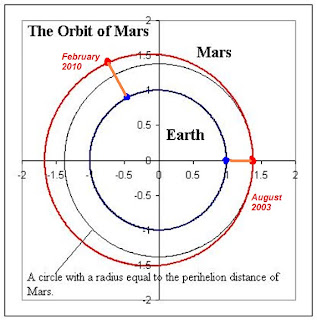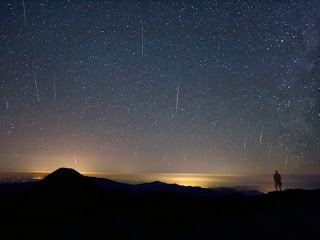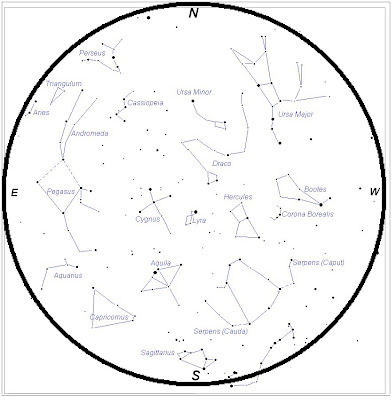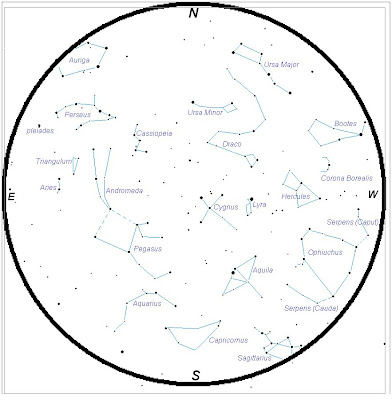[It (rumor) has a hundred tongues, a hundred mouths, a voice of iron]
..........In mythology, Mars has many followers: Phobos and Deimos (fear and panic, and the namesakes for Mars' two "moons"), Eris (goddess of discord, now associated with a
 ……… This email began in 2003, when there actually was a particularly close approach of Mars to the Earth. You may not remember Mars hanging in the sky like the full Moon; if so, don’t worry, you’re not crazy. Mars has a noticeably elliptical orbit, as I’ve shown in the first diagram. The Earth has an orbit that very close to circular. In the second diagram, the orbits of the Earth and Mars are drawn to scale in a way which emphasizes the oval nature of Mars’ orbit. Periodically (about once every twenty months or so), The Earth and Mars line up with the Sun, as the Earth passes Mars in its orbit. At this time, Mars appears larger than it otherwise would – but not by all that much.
……… This email began in 2003, when there actually was a particularly close approach of Mars to the Earth. You may not remember Mars hanging in the sky like the full Moon; if so, don’t worry, you’re not crazy. Mars has a noticeably elliptical orbit, as I’ve shown in the first diagram. The Earth has an orbit that very close to circular. In the second diagram, the orbits of the Earth and Mars are drawn to scale in a way which emphasizes the oval nature of Mars’ orbit. Periodically (about once every twenty months or so), The Earth and Mars line up with the Sun, as the Earth passes Mars in its orbit. At this time, Mars appears larger than it otherwise would – but not by all that much.
……….To begin with, the closest approach (which is referred to as “opposition”, because the Sun and Mars will be on opposite sides of the sky) in 2003 was indeed close … but as big as the full Moon? The full Moon certainly dominates the sky, and seems to be huge against the celestial sphere, but actually the Moon is only about half a degree across. This means that you could stretch about 360 moons from one horizon to the other. For a angle smaller than one degree, we break one degree into sixty “minutes of arc” (this is the Babylonians’ fault – they liked dividing by sixty instead of ten), so the Moon has a size of about thirty minutes of arc. How large will Mars appear? Mars at its largest will not even reach one minute of arc, so lets go one size down and divide minutes of arc into “seconds of arc”, so that the Moon is 1800 seconds of arc (written as 1800”) across. Mars at its largest had an apparent size of 25”. Now, that’s pretty big – for Mars. We’re rather far away from Mars right now, and it currently has an apparent size of 5.8”; if you are willing to get up before dawn and look for Mars, you can find it in the constellation Gemini, above the constellation of Orion. It will be strongly red and fairly bright, but still dimmer than the two brightest stars in Orion. The chart below shows the sky at about 5 AM. The next closest approach will be at the beginning of next February, and Mars will appear to be 14” across. The claim that “Mars will appear to be as big as the full Moon” came from a claim in one of the emails that “Mars would appear as large as the full Moon when seen through a telescope”. The qualifying phrase fell out of the email quickly, which is understandable in that it doesn’t make much sense. It seems strange to say “the Moon is 75 times larger than Mars” in a way that makes it seem that you should be able to wave at Martians.

……….So, in 2003, Mars did appear larger in telescopes than it normally does, and it did appear brighter in the sky. I confess that I had no compunction about using the close approach to get the word out at that time; when we had a Mars viewing at where I was working at the time (Texas A&M University – Kingsville) had more than seventy people show up, some of whom came under the mistaken impression that they would never be able to see Mars again. Now, we’re just back in the zone where Mars appears every two years or so, large enough to show a disk when seen through a telescope
……….A lot of the confusion has been caused by the fact that the emails that had been clear and precise about Mars back in 2003 didn’t reappear each year, where the confusing emails remain. Kinda makes sense, though, since the precise emails would have had “2003” on them, and people wouldn’t be sending them six years later.
………Before I go, I have another confession: I’ve never really enjoyed observing Mars. Mars is only visible about once every two years, it does not have moons visible in a small telescope, it does not have rings, even at its closest it appears smaller than Jupiter in the telescope. Furthermore, Mars has a thin atmosphere, thick enough for there to be dust storms that can cover the entire planet, and thin enough for the dust storms to last for weeks, turning the planet into nothing more than an orange dot in the telescope. Ah well, I’ll give it another try next year, and see how it goes …




